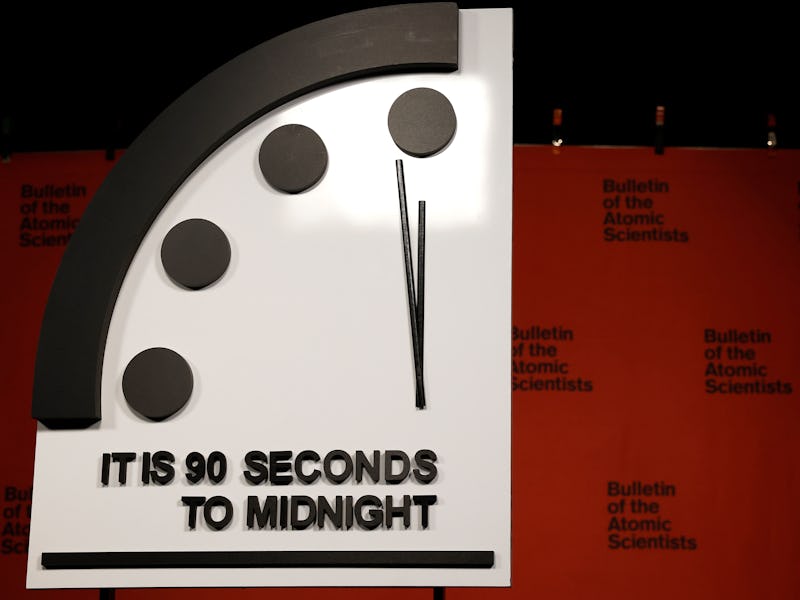2024’s Doomsday Clock Stuck at 90 Seconds to Midnight — AI Could Tip It Over The Edge
At least it's not getting worse?

The Bulletin of the Atomic Scientists’ Science and Security Board opted not to move the hands of its Doomsday Clock on January 23, signaling that (as Inverse reported last year) the world is still pretty much a dumpster fire sitting next to a powder keg.
Since 1947, the Bulletin has published the Doomsday Clock to illustrate how close its board members think humanity is to destroying itself, using midnight as a metaphor for the end of the world. And for the second year in a row, the clock is hovering at 90 seconds to midnight, the closest it's ever been.
“We could be facing catastrophe unless we better manage the technologies we've created,” said Bill Nye, who participated in the January 23 Doomsday Clock announcement.
The Doomsday Clock graphic debuted in 1947. The farthest from midnight the clock has ever been was 17 minutes, thanks to the end of the Cold War in 1991. The clock dropped from minutes to seconds for the first time in 2020.
Just How Doomed Are We, Anyway?
There's no actual math behind the Doomsday Clock's annual setting; the "90 seconds" don't represent an actual countdown. Instead, the time is the Bulletin's way of illustrating how worried its Science and Security Board members are about humanity's current trajectory going massively lateral.
In 1945, several of the scientists who developed the atomic bomb founded a publication that they hoped would remind the public and elected officials of the dangers of nuclear war. They called it the Bulletin of the Atomic Scientists, and the Bulletin began publishing the Doomsday Clock two years later, in 1947. In 2007, the Bulletin decided to cover issues beyond its original subject matter of nuclear proliferation, including climate change, "disruptive technologies" like AI, and biological security.
Given that the Bulletin’s Science and Security Board is made up of some of the world's top experts in biosecurity, climate science, international relations, and other fields, it's worth paying attention when they say they're worried — especially when, for two years in a row, they say they're more worried than they've ever been.
So what's got this group of experts so worried? The two main culprits are worsening climate change and Russia's ongoing invasion of Ukraine.
Additionally, 2023 was the hottest year on record (cue Homer Simpson reminding us that it’s just “the hottest year on record so far”), and the rising temperatures were accompanied by floods, wildfires, and extreme weather around the world.
The war in Ukraine, now approaching its second anniversary with no end in sight, is a potential flashpoint for nuclear conflict (or environmental disaster if nuclear power plants like Zaporizhizha get caught in the crossfire). Meanwhile, the board members also expressed concern that the U.S., Russia, and China may be ramping up toward a three-way nuclear arms race. Relations between the U.S. and Russia currently look like a throwback to the depths of the Cold War, with suspended or stalled nuclear weapons treaties.
Since October, the war in Gaza has been another potential flashpoint for even more widespread conflict.
But there's an unexpected twist in this year's Doomsday Clock announcement lurking behind the scenes: generative AI.
“AI has great potential to magnify disinformation and corrupt the information environment required to solve large global issues and on which democracy depends,” writes the Bulletin in its announcement. “AI-enabled disinformation efforts could be a factor that prevents the world from dealing effectively with nuclear risks, pandemics, and climate change.”
The idea behind the Doomsday Clock isn't just to call attention to how bad things are, though. Its goal is to encourage voters and policymakers to solve the problems the Bulletin's board members have pointed out.
As Bulletin CEO and president Rachel Bronson said during today's announcement, "The Bulletin remains hopeful — and inspired — in seeing the younger generations leading the charge."
This article was originally published on